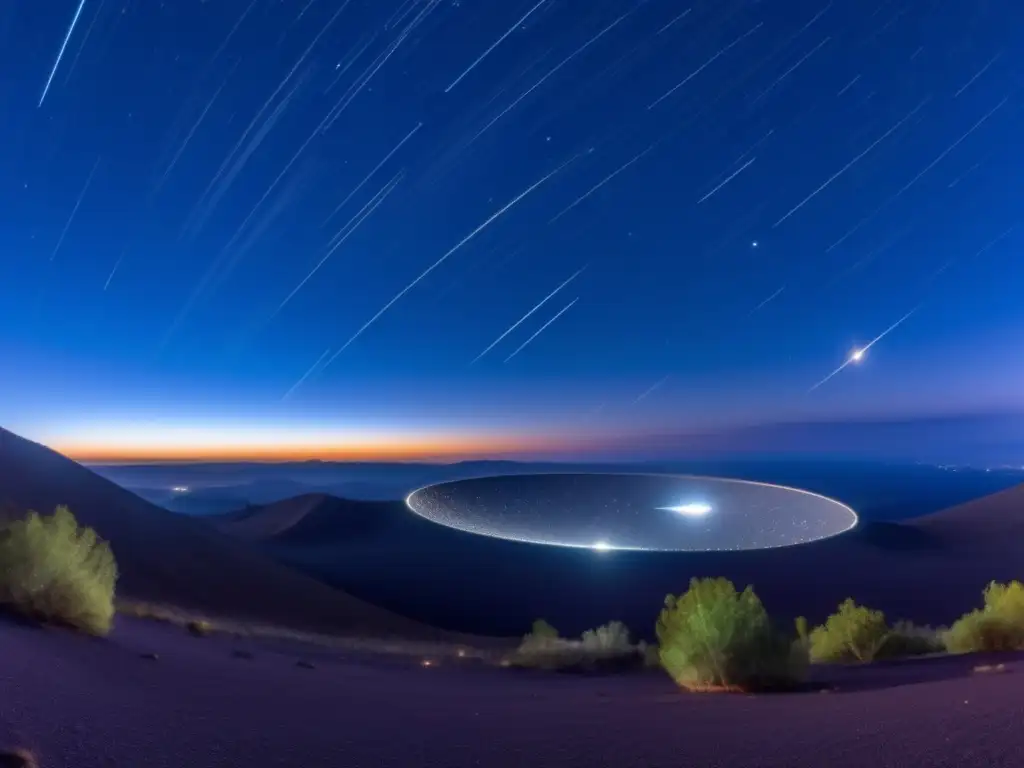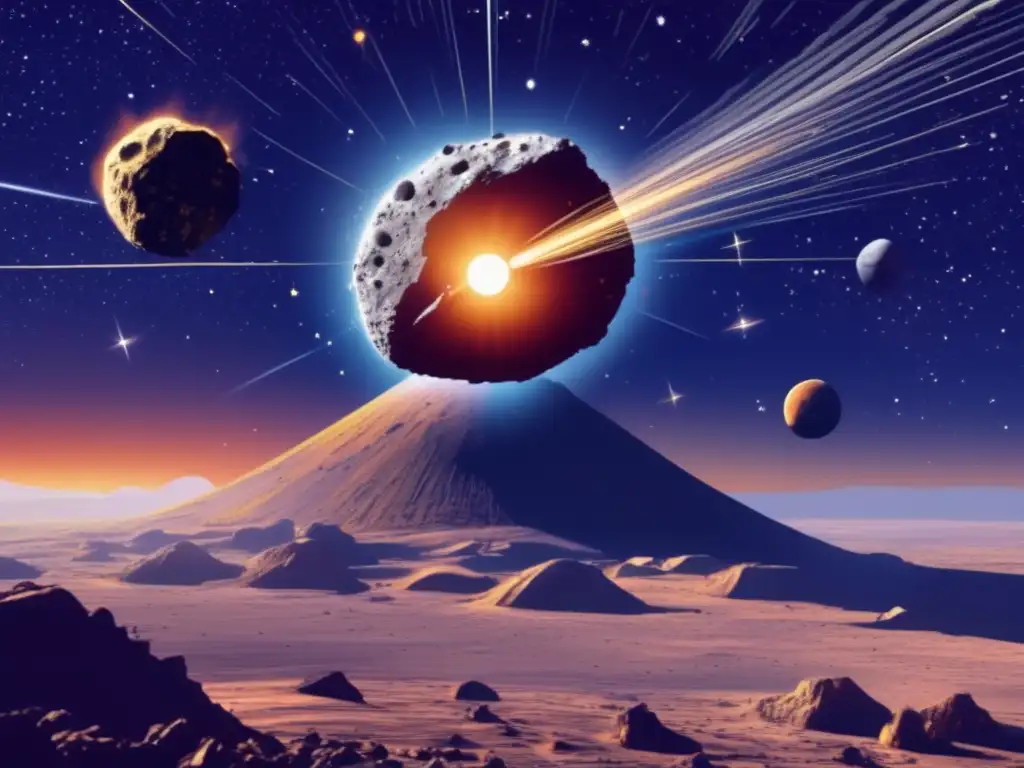Deflecting The Space Threat: Techniques For Asteroid Defense

Introduction
Asteroids, big or small, have been a matter of concern for astronomers and astrophysicists. In the event that an asteroid collides with Earth, it has the potential to cause catastrophic damage, such as wiping out entire cities or even leading to the extinction of all life on the planet. To avoid such calamities, scientists are working tirelessly to develop techniques to deflect asteroids away from Earth's path. This article will delve into the most promising techniques for deflecting asteroids, including their advantages and disadvantages.
The Gravity Tractor Method

What is The Gravity Tractor Method?
The gravity tractor method involves using the pull of a spacecraft's gravity to gradually shift the asteroid's trajectory. The spacecraft gets close to the asteroid and uses its engines to maintain a constant distance while the gravitational force attracts the asteroid towards the spacecraft. The spacecraft's gravity force is so low that it does not cause the asteroid to break apart or go off course.
Advantages of The Gravity Tractor Method
The gravity tractor method is one of the gentlest asteroid deflection techniques, as it does not require any physical contact with the asteroid. This reduces the risk of the asteroid breaking apart and causing more harm than good.
Disadvantages of The Gravity Tractor Method
One of the main disadvantages of the gravity tractor method is that it requires a long amount of time to be effective. It could take years to move an asteroid off its collision course using this technique. Additionally, the spacecraft used must have enough fuel to maintain a constant distance from the asteroid over extended periods of time, which could be costly.
The Kinetic Impactor Method

What is The Kinetic Impactor Method?
The kinetic impactor method involves crashing a spacecraft into the asteroid at high speed, creating a powerful force that can alter the asteroid's trajectory. The spacecraft could be fitted with a kinetic impactor or a large piece of metal that would impact the asteroid and deflect it away from Earth.
Advantages of The Kinetic Impactor Method
The kinetic impactor method is a faster method than the gravity tractor method, as the impact creates a significant push force on the asteroid. It is also a relatively simple technique with proven efficacy. As a bonus, a kinetic impactor spacecraft could be used for multiple interventions since it wouldn't require a specific type of asteroid.
Disadvantages of The Kinetic Impactor Method
One of the main disadvantages of the kinetic impactor method is that the impact could create uncontrollable debris that may cause more damage than if the asteroid hit Earth without intervention. Additionally, there is a risk that the asteroid could break apart, creating smaller pieces that could also be a threat to Earth.
The Nuclear Explosive Method

What is The Nuclear Explosive Method?
The nuclear explosive method involves detonating a nuclear device near an asteroid, either on or in close proximity to its surface. The energy released by the explosion would potentially alter the asteroid's trajectory by changing the amount of mass it contains, or breaking up its structure.
Advantages of The Nuclear Explosive Method
The nuclear explosive method has the potential to offer a rapid response to a potential asteroid collision. It would be effective in deflecting a larger size asteroid that could potentially cause significant damage. It is also an efficient way of dealing with multiple threats as one large nuclear device could be used to blast multiple asteroids.
Disadvantages of The Nuclear Explosive Method
The nuclear explosive method would pose several environmental and political risks. Detonating a nuclear device could potentially create more debris than the asteroid itself and contaminate the surrounding area with radiation. There are also political implications of deploying nuclear weapons in space, which may lead to tensions and escalate conflicts between nations.
Frequently Asked Questions

-
Can we use lasers to deflect asteroids?
Lasers have been proposed as a possible method of asteroid deflection. By focusing powerful laser beams on specific points on an asteroid's surface, scientists believe they could gradually alter its trajectory. However, this technique is still theoretical and would require advanced technology to be developed.
-
What criteria are used to determine which method to use?
Several factors are considered before determining which method to use, including the size and composition of the asteroid, the time remaining, and the likelihood of success. Scientists may also consider the financial and environmental costs of each method before making a decision.
-
How much warning do we have before an asteroid collides with Earth?
This varies from case to case, but most scientists estimate that we would have at least several years of warning before a large asteroid collides with Earth. Smaller asteroids can be detected only days or weeks before impact, making it harder to implement effective deflection techniques.
-
What is the likelihood of an asteroid colliding with Earth?
Asteroid collisions are rare occurrences, but they have happened in the past and could happen again. Scientists estimate that a large asteroid capable of causing significant damage to the planet collides with Earth once every few hundred thousand years. Smaller asteroids collide with Earth more frequently, but they usually burn up in the atmosphere before reaching the surface.
-
What would happen if an asteroid collides with Earth?
The effects of an asteroid impact depend on several factors, including the size, speed, and angle of impact. A large asteroid could potentially wipe out entire cities and cause global devastation, leading to the extinction of many species, including humans. Smaller asteroids could also cause significant damage, such as creating large craters or triggering tsunamis.
Conclusion
As we continue to explore space, the threat of asteroids colliding with Earth becomes an increasingly urgent concern. While no technique is foolproof or without risks, the methods discussed in this article show promise for mitigating the dangers posed by asteroids. It is essential that we continue to invest in research and development to ensure that we are prepared for any potential asteroid threats in the future.
We encourage readers to share their thoughts and ideas about this topic in the comments section below. Thank you for reading.
Additional Resources

For more information on asteroid deflection techniques, please refer to the following resources:
- NASA Planetary Defense Coordination Office
- Space.com Asteroid Defense News
- NASA Double Asteroid Redirection Test (DART) Mission
 Our Planetary Bodyguards: Strategies For Asteroid Defense
Our Planetary Bodyguards: Strategies For Asteroid Defense Standing Guard In The Cosmos: Tools For Asteroid Defense
Standing Guard In The Cosmos: Tools For Asteroid Defense Ready, Aim, Deflect: The Latest In Asteroid Defense Strategies
Ready, Aim, Deflect: The Latest In Asteroid Defense StrategiesIf you want to discover more articles similar to Deflecting The Space Threat: Techniques For Asteroid Defense, you can visit the Planetary Defense category.
Leave a Reply

Articulos relacionados: